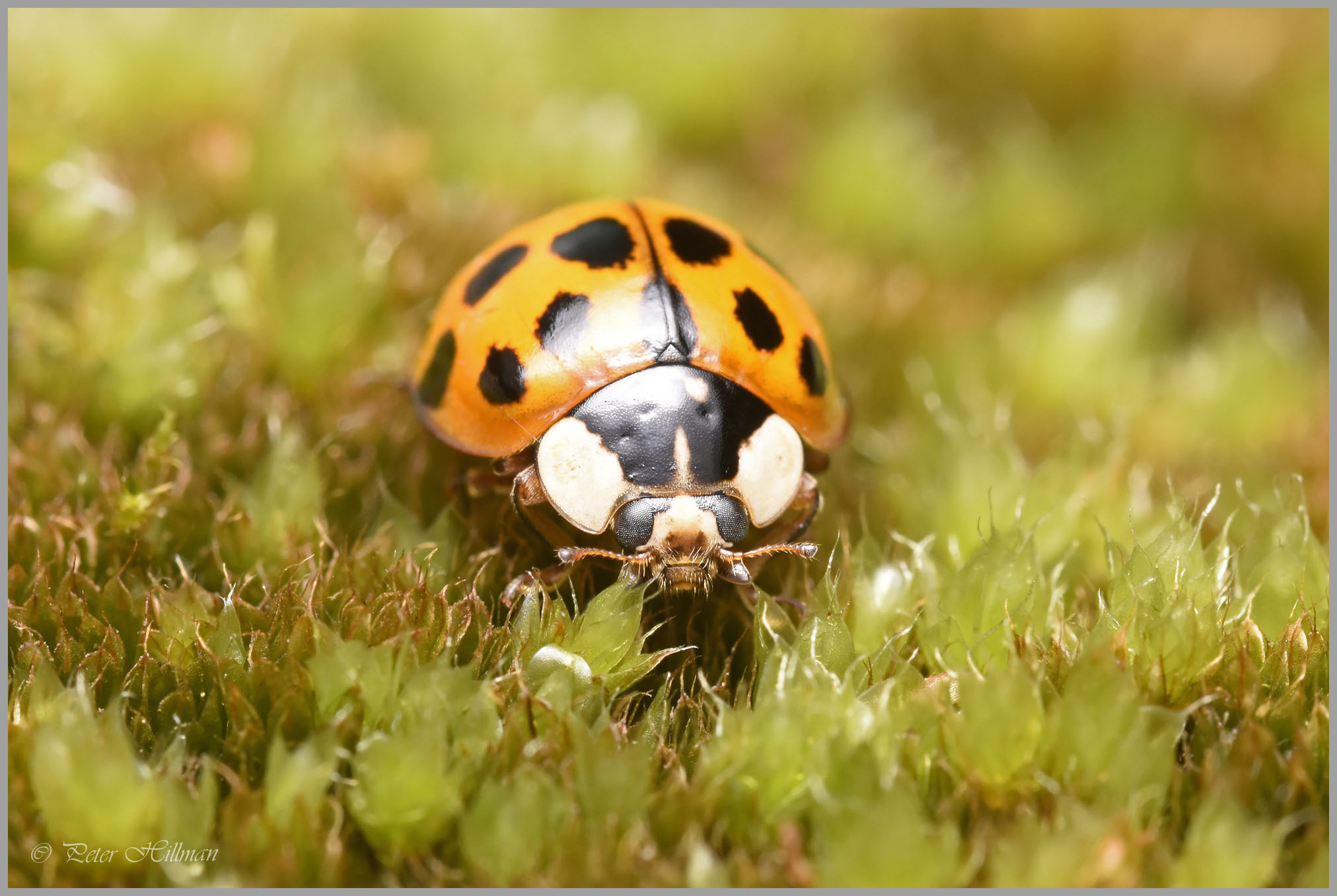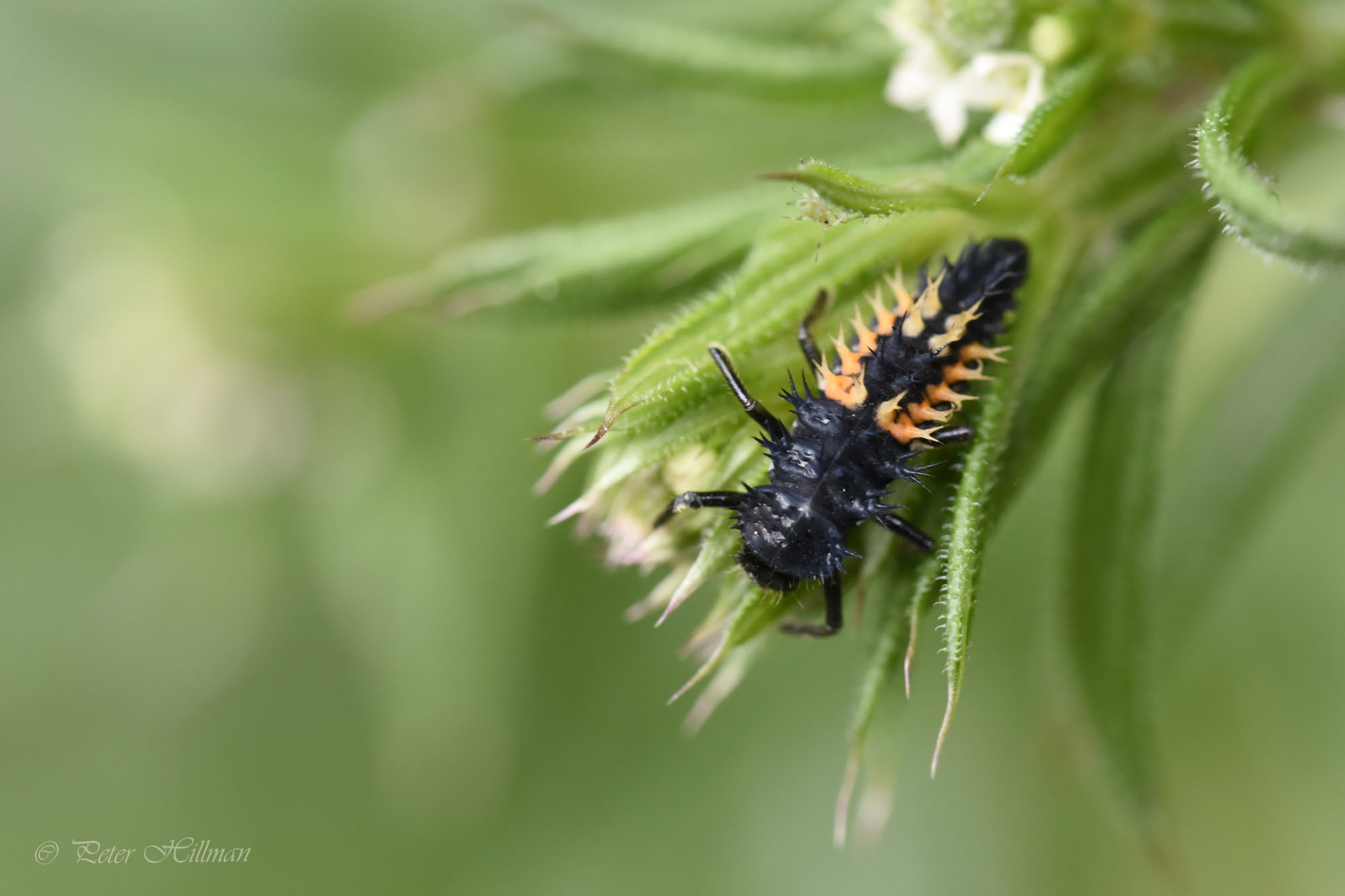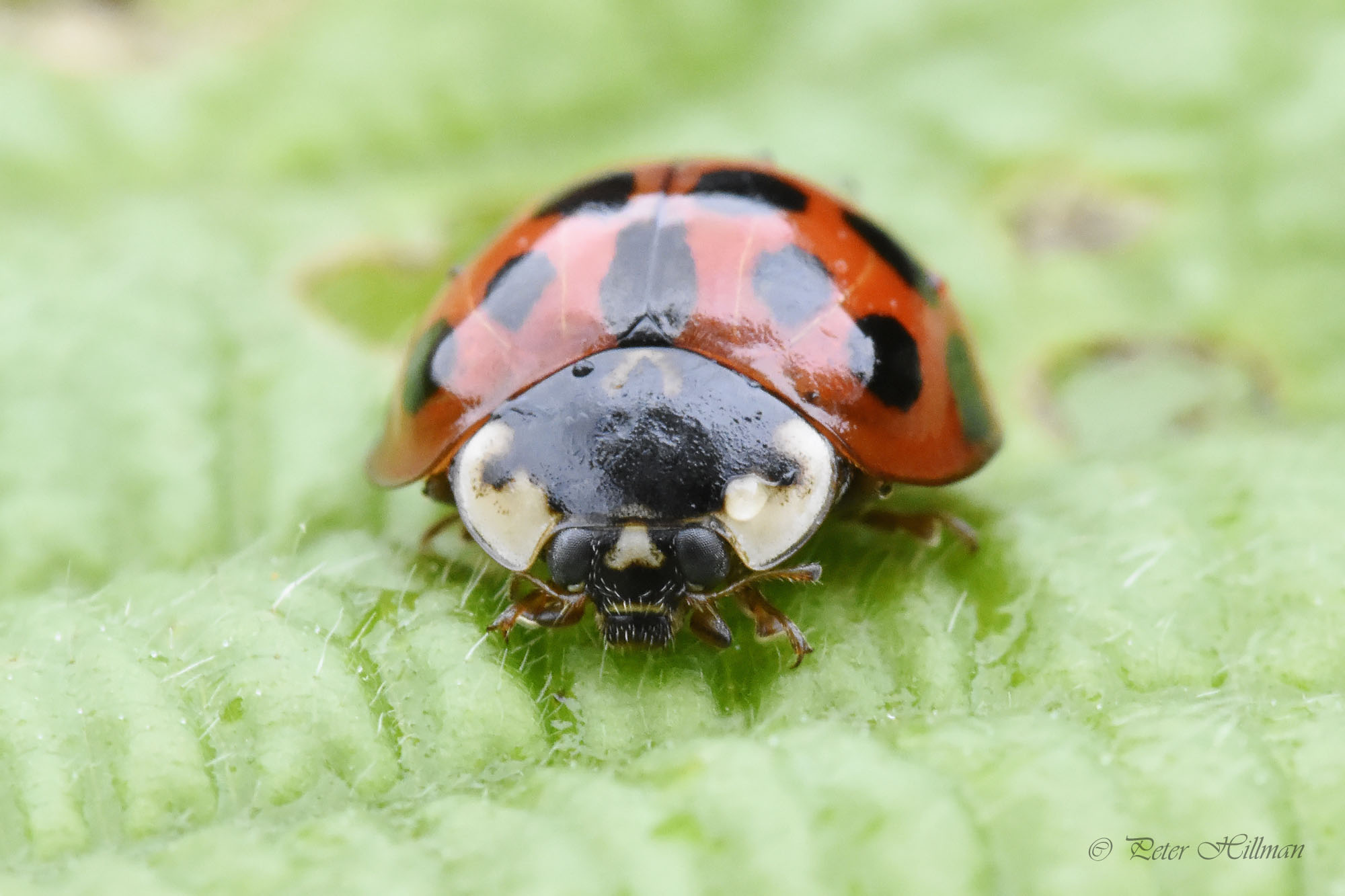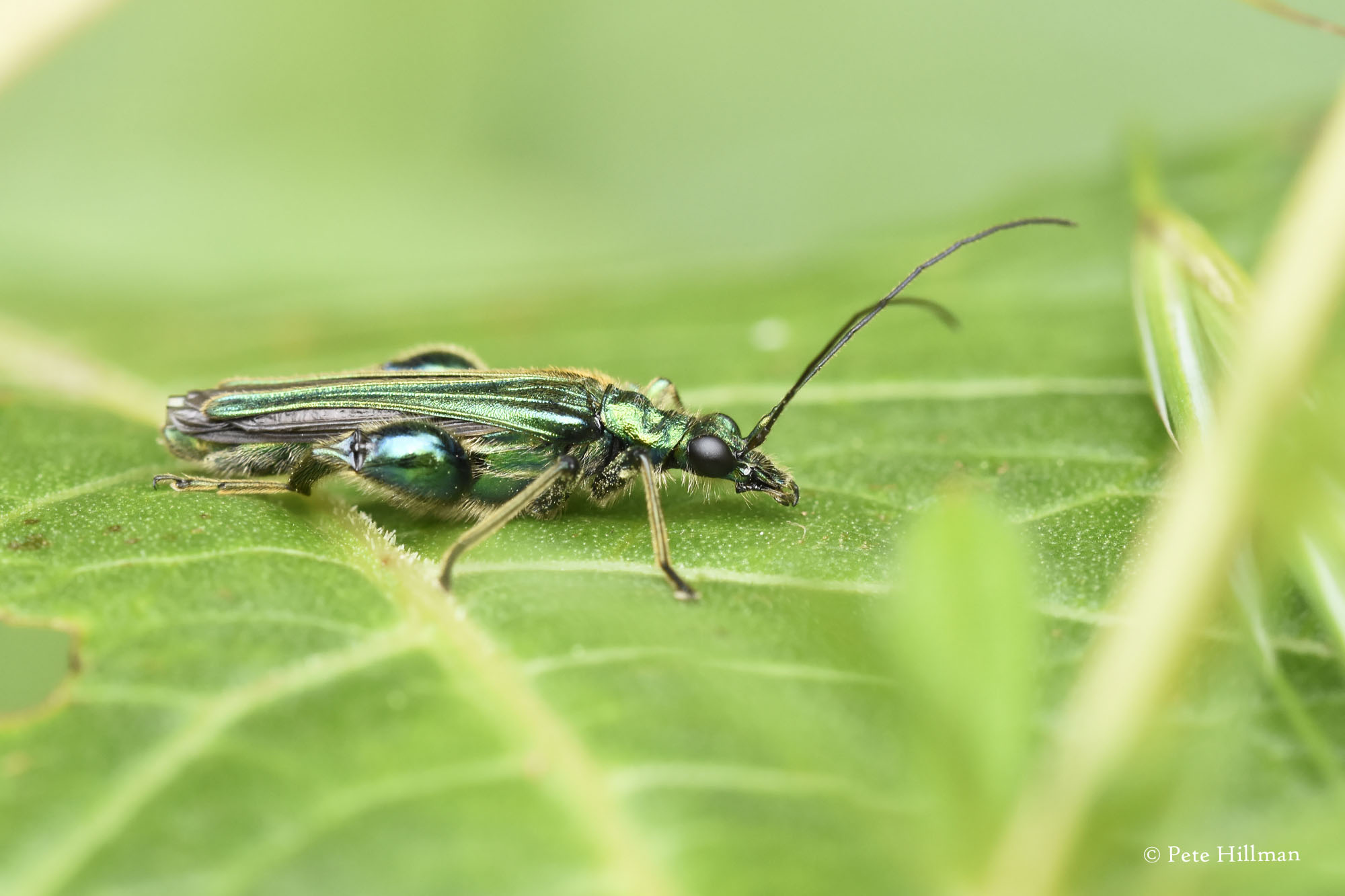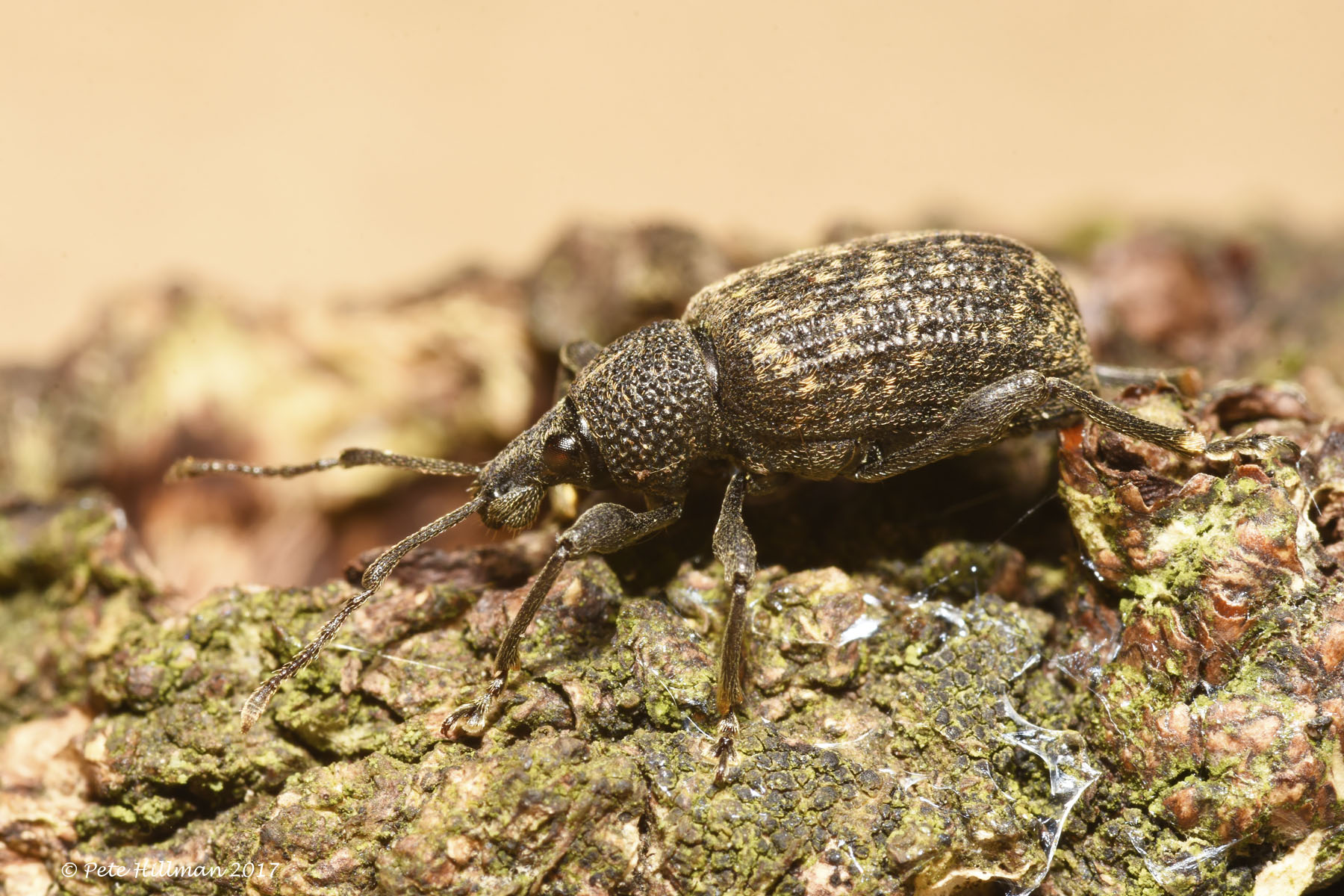x6 images. Double click to enlarge.
It is end of season for the tomato plant my neighbour had kindly given me in a hanging basket. It had been bountiful in fruit, but it was it now in its last days as autumn approaches, and I had the thought to look more closely at it before dropping it in the recyling bin.
I have never seen a member of this family of beetles before. Latridiidae are known as ‘scavanger’ or ‘mould beetles’. This one is very small at 2 mm (5/64 in) long, and is called Cartodere bifasciata. It feeds on spores and moulds found on rotting plant materials.
There were several of these green leafhoppers, adults and possible larvae. Called Empoasca decipiens, one of 3 very similar UK species, they extract sap from the plant on which they feed.
Like a scene from the film Alien, I discovered the dead remains of this wingless aphid. You can’t miss the obvious hole in the abdomen where something … probably a braconid wasp … burst out.
We have a live aphid here … most likely the Peach-potato Aphid (Myzus (Nectarosiphon) persicae). The apterae (lacking wings) are generally yellowish-green but vary from whitish or pale yellowish green to mid-green, rose-pink or red. They are often darker in cold conditions.
Another parasitised aphid all tethered … which goes to show that nature has a way of keeping the equilibrium.
I also spotted several running-crab spiders and money spiders … but all too quick and unwilling to hang around for a photo shoot. So even within its death throws a plant can still support so much life … and just focusing the mind and the eyes on a different plane can open up so much.






































